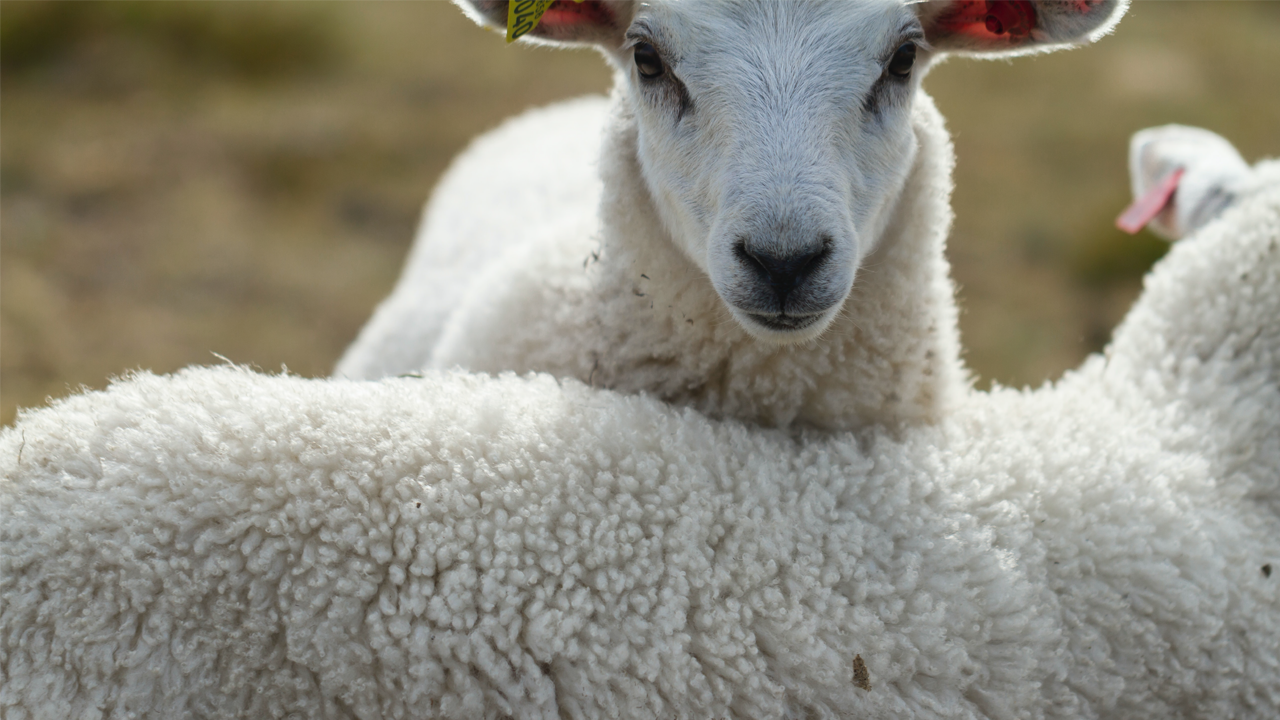With sweater weather season upon us, there’s no better time to cosy up and dive into the world of wool. Wool is a natural fibre that comes from the fleece of sheep and other animals, such as alpacas, llamas, and goats. Sheep wool has been used in clothing for centuries, dating back to ancient Mesopotamia and Egypt and is renowned for its breathability, durability, flame, stain and water-resistance and natural insulation properties.
It is hard to imagine the immense quantity of wool produced by our fluffy friends, but according to recent data, approximately 1.2 billion sheep around the world yield a staggering 1,034 million kg 1,949 million kg of clean wool per year. New Zealand contributes to 8-9% of global wool production and has become the third largest wool producer in the world as of 2020.
Woolly jumpers and knits are a wardrobe staple for many, but wool production is a complex process that raises several concerns about animal welfare and the environment.
Wool is harvested by shearing sheep during springtime or summer using electric clippers or traditional shears. It is then sorted based on quality, fibre length, and colour. Wool comes in different thicknesses, measured in ‘micron’. Merino sheep produce the finest wool, starting at around 14.5 micron up to 25 micron, but can be finer. The softest wool is used for undies, scarves and clothing, while coarser wool is often used for carpets, upholstery and insulation.
Next, the wool is scoured, which is the process of washing it to remove any dirt, grease (unrefined lanolin), and impurities. This is important to ensure the wool is clean and ready for processing. After scouring, the wool is carded through a carding machine which uses metal teeth to separate and comb through the material, removing any remaining vegetable matter or impurities. The wool fibres are then spun by twisting fibres together to create a durable yarn and woven into fabric or knitted clothing. The wool is dyed at this stage to add colour and pattern to the final product.
Wool is often highly regarded in the sustainable fashion industry because it’s renewable and compostable (as long as it’s not coated with plastic), but like many fabrics out there, it’s not without negative impacts. One of the biggest issues of wool production is the high quantities of water and land needed to raise sheep and clean raw wool. In fact, it has been reported that a staggering 170,000 litres of water is used to produce just 1 kilogram of clean wool. Large amounts of land have also been cleared to accommodate grazing sheep, which can lead to soil erosion, loss of biodiversity and land desertification. This happens when the land loses its ability to retain water and becomes dry and barren, like a desert.
Additionally, sheep release greenhouse gas emissions in the form of methane gas, contributing to climate change. While there is hope and scientific innovation happening, such as the breeding of low-emission sheep in New Zealand, we need to do more to bring down our global temperature.
Besides their environmental impact, sheep farming has also come under scrutiny due to concerns about animal welfare. Shearing can be a stressful and painful process for sheep if not done right, and the wool industry has been accused of mistreating animals and causing irreparable suffering. Cruel practices such as mulesing, tail docking, castration and selective breeding have also been performed in sheep farming, causing the animals unnecessary pain.
Mulesing, for instance, involves the removal of strips of skin from the buttocks of lambs to prevent flystrike, which can lead to severe pain, infections, and even death. While mulesing was banned in New Zealand in 2018, it is still legal in other countries. Tail docking is another practice where lamb tails are removed without anaesthesia to reduce the risk of faecal matter accumulating on the wool, despite calls from organisations to administer pain relief and evidence that flystrike can be managed without tail docking.
To ensure the wool you use is from safe and responsible sources, look for certifications and standards like the Responsible Wool Standard (RWS) and ZQ Merino. The Responsible Wool Standard certification was developed by US company the Textile Exchange. RWS ensures that wool is sourced from farms that meet strict animal welfare and environmental standards, including protecting sheep from mulesing. RWS requires the full supply chain of the wool, including all wool farmers, traders and manufacturers to be certified, which helps you to know that the wool you source is obtained safely.
For Merino, The New Zealand Merino Company has developed two brands of wool standards, ZQ and ZQRx. ZQ growers meet ZQ fibre quality, animal welfare, care for the environment and social responsibility standards. ZQ also requires traceability of the wool from farm to finished product, ensuring that it has been responsibly produced and processed throughout the supply chain. ZQRX is their newest brand, which is a regenerative agriculture index that helps farmers work with nature to continuously improve human, animal and environmental outcomes. ZQRX farmers are working with the natural world each day helping to restore waterways, protect native species, offset carbon, and enhance local communities.
Wool is a source of much debate amongst sustainable fashion advocates, there can be some conflict between using a fibre that is produced naturally, and animal welfare advocates. So, if you’d like to avoid animal-sourced products altogether, we recommend looking for yarns or materials from recycled wool – which is becoming more common, and quality has improved over the last five years. Or natural fibres such as hemp, or organic cotton. There are also some vegan wool alternatives being developed using materials such as calotropis, a desert shrub that thrives in harsh conditions, and Woocoa, a biofabricated material made from agricultural waste (coconut and hemp fibres). These alternatives not only eliminate animal welfare concerns but can also help reduce the environmental impact of clothing production.

